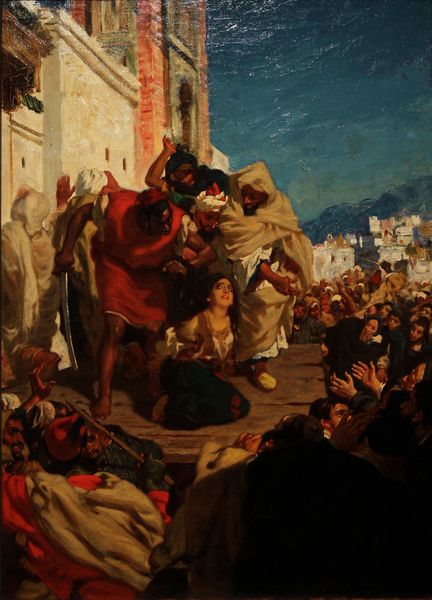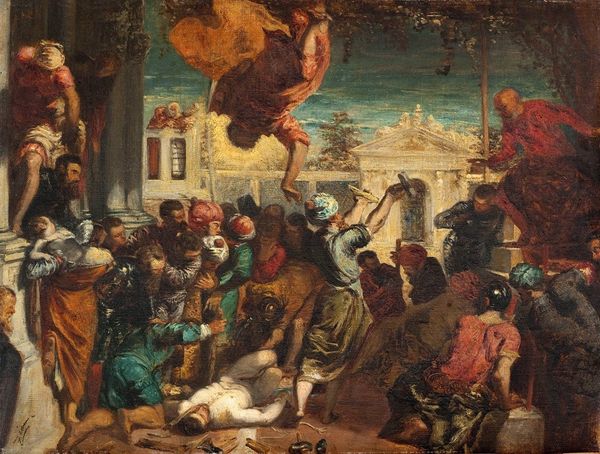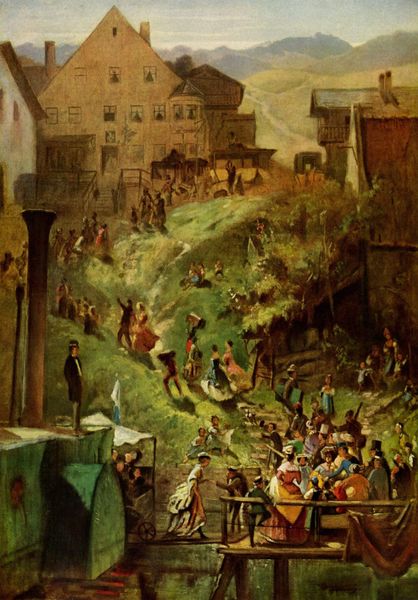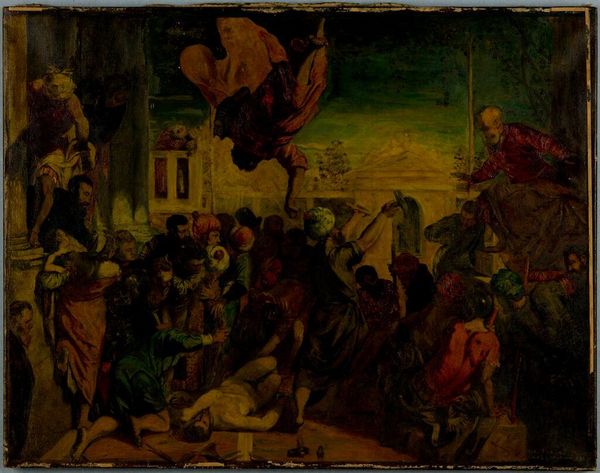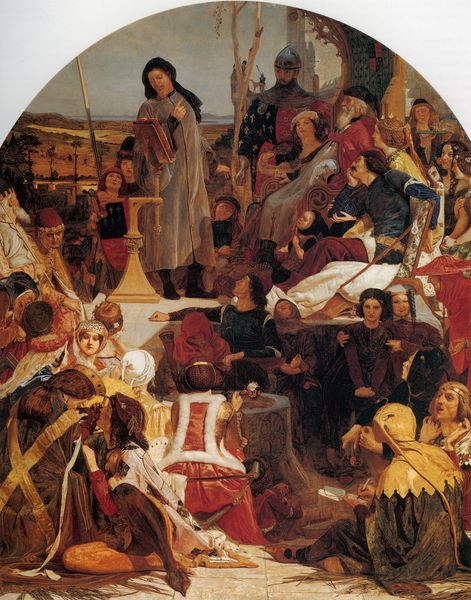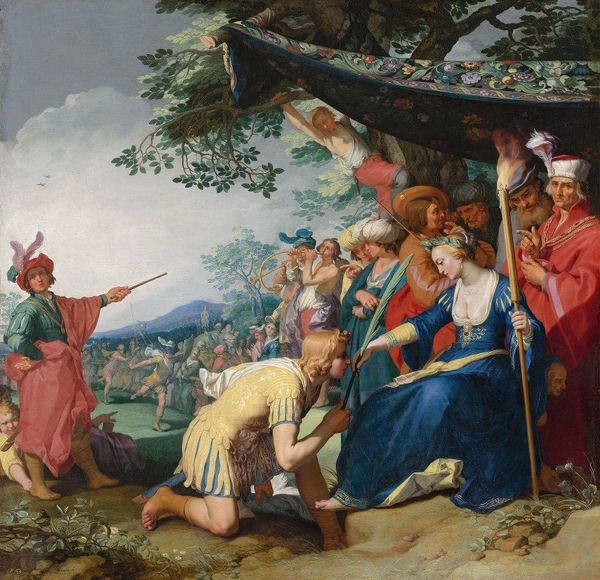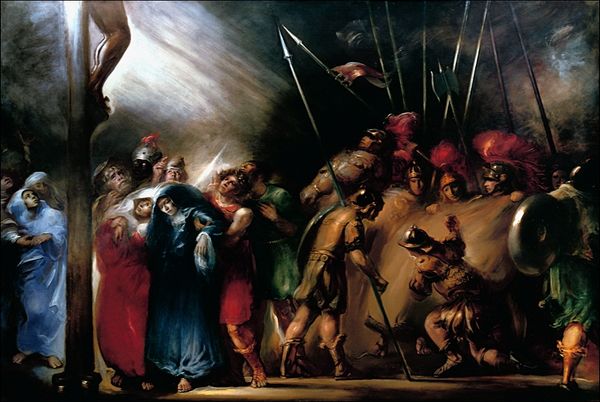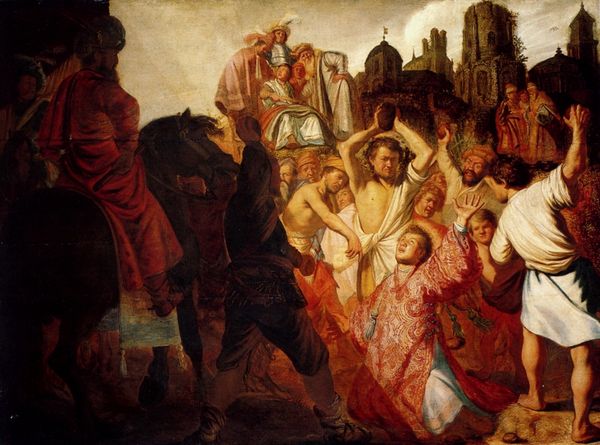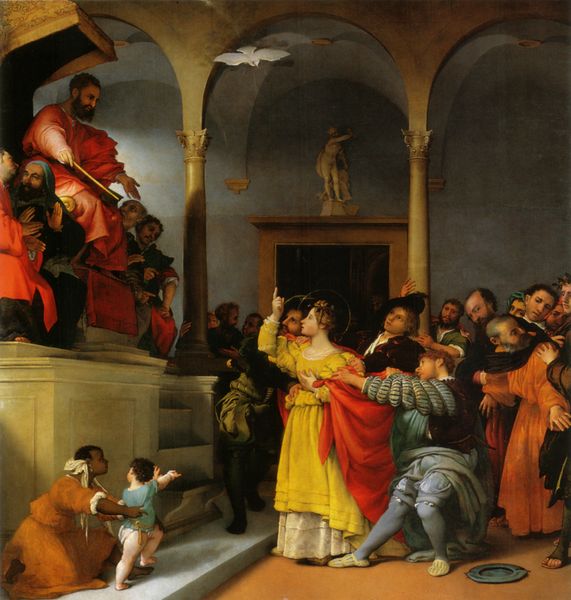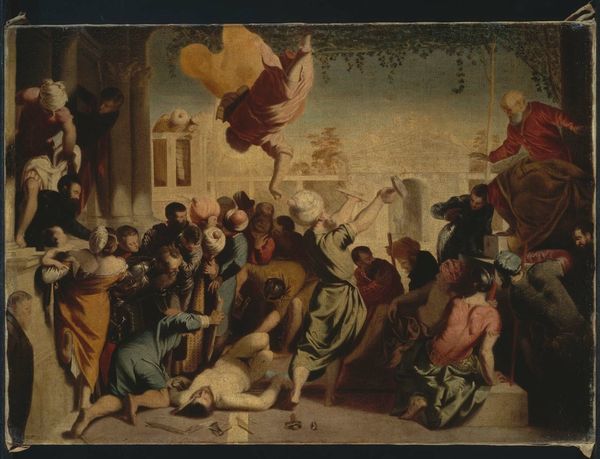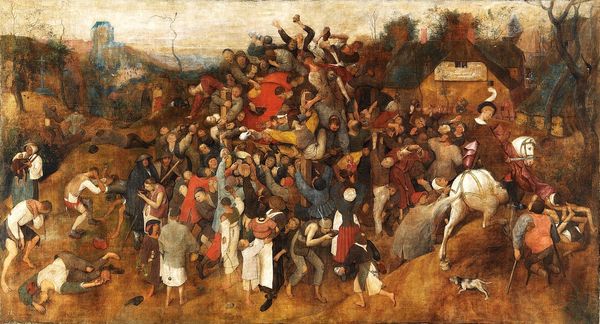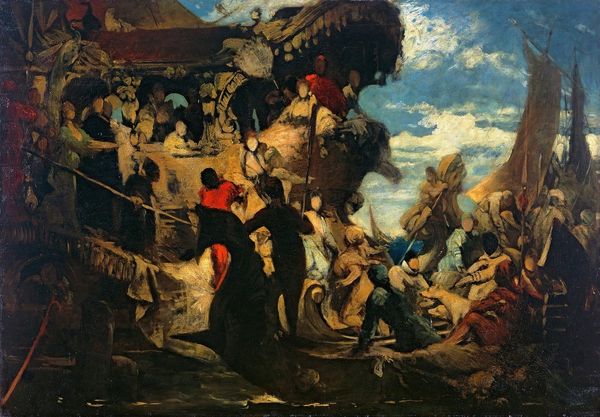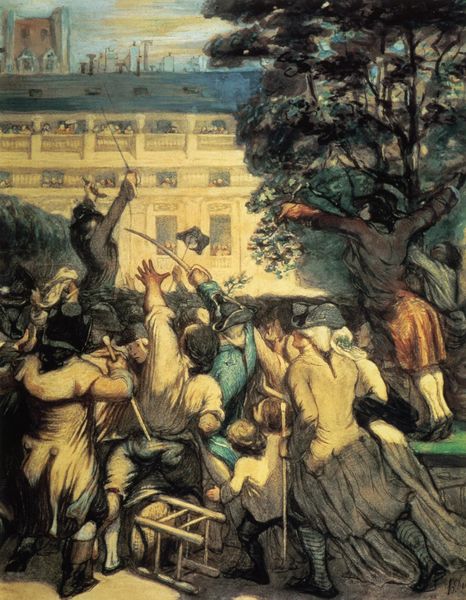
Copyright: Public domain
Editor: We’re looking at "Execution of a Jewess in Morocco," an 1861 oil painting by Alfred Dehodencq. It’s…intense. The swirling crowd, the stark light…it feels chaotic and deeply unsettling. What do you see in this piece that perhaps I'm missing beyond the obvious drama? Curator: Drama, yes, but also a chilling display of…theatrical cruelty. Dehodencq wasn't just painting a historical scene; he was staging a spectacle. I see Orientalism at play here, wouldn't you agree? The artist, a European man, is offering his interpretation, a Western lens focused on a North African scene. He's both documenting and constructing a narrative. It makes me wonder: Whose story is truly being told, and how accurately? Editor: That’s a good point. It feels…exploitative somehow? The way the crowd is painted, almost rabid… and the Jewess presented as this picture of fragile innocence. Curator: Exactly. It taps into well-worn tropes of the 'exotic' East. Do you notice how the space is constructed? It feels… staged, like a performance designed for a European audience hungry for tales of far-off lands and their perceived barbarity. What kind of emotional chord does it strike in you? Editor: A discordant one! It makes me question the motives behind its creation. I appreciate art that challenges perspectives, and understanding its context adds depth. Curator: Agreed. And I think that discomfort, that questioning, is exactly what makes revisiting works like this so valuable. Even when their original intentions might be troubling. This painting certainly isn’t comfortable viewing, is it? Editor: Definitely food for thought. Thank you!
Comments
No comments
Be the first to comment and join the conversation on the ultimate creative platform.
